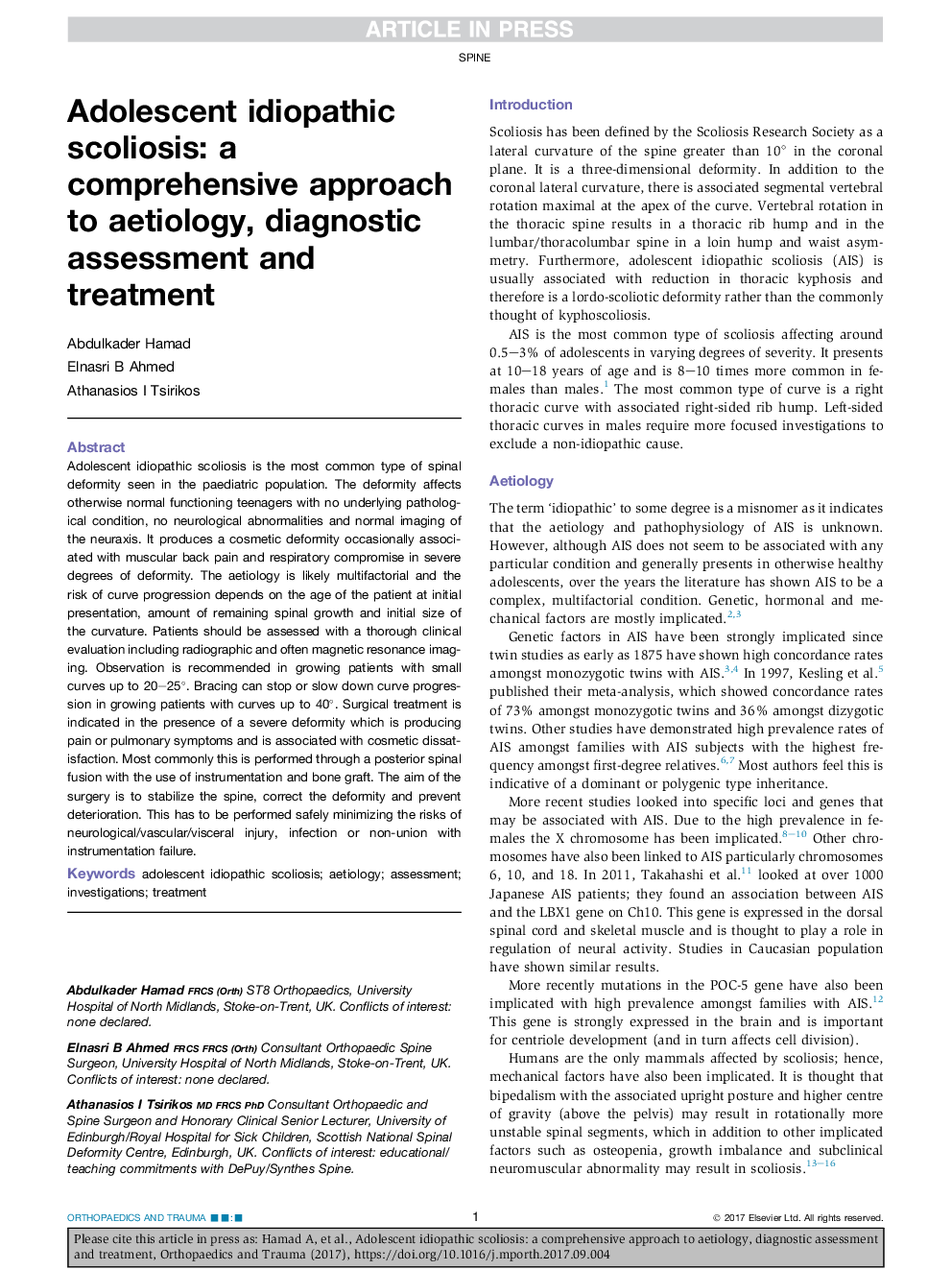ترجمه فارسی عنوان مقاله
اسکولیوز ایدیوپاتیک نوجوانان: یک رویکرد جامع به علت اتولوژی، ارزیابی تشخیصی و درمان
عنوان انگلیسی
Adolescent idiopathic scoliosis: a comprehensive approach to aetiology, diagnostic assessment and treatment
| کد مقاله | سال انتشار | تعداد صفحات مقاله انگلیسی |
|---|---|---|
| 129766 | 2017 | 7 صفحه PDF |
منبع

Publisher : Elsevier - Science Direct (الزویر - ساینس دایرکت)
Journal : Orthopaedics and Trauma, Volume 31, Issue 6, December 2017, Pages 343-349
ترجمه کلمات کلیدی
اسکولیوز ایدئوپاتیک نوجوانان، اتولوژی، ارزیابی، تحقیقات، رفتار،
کلمات کلیدی انگلیسی
adolescent idiopathic scoliosis; aetiology; assessment; investigations; treatment;

